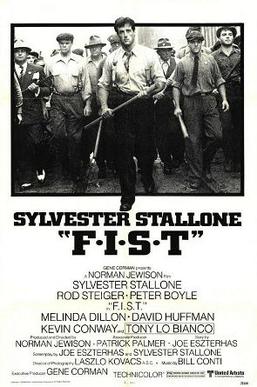
Much like In The Bedroom, 2003’s Mystic River is a film that deals with guilt, murder, and vengeance in New England. Whereas In The Bedroom deals with the guilt of just four people, Mystic River deals with the guilt of an entire neighborhood.
Mystic River opens in Boston in 1975. Three young boys are writing their names in wet cement when a car pulls up beside them. An angry-looking man (played by the always intimidating John Doman) gets out of the car and announces that he’s a police officer and that the three boys are under arrest. He orders them to get in the car. Of the three boys, Jimmy and Sean refuse but meek Dave gets into the car, where he’s greeted by a leering old man. Jimmy and Sean watch as the car drives away with their friend trapped in the back seat. Dave is held prisoner and abused by the two men for four days until he finally manages to escape.
Twenty-five years later, the three boys have grown up but are still haunted by what happened. Sean is now a detective with the Massachusetts State Police. Jimmy is an ex-con who now owns a local store and who, despite being married to Annabeth (Laura Linney), the daughter of a local gangster, is trying to lead a law-abiding life. As for Dave (Tim Robbins), he is married to Celeste (Marcia Gay Harden) and manages to hold down a job but he’s also the neighborhood pariah.

When Jimmy’s daughter Katie (Emmy Rossum) is brutally murdered, Sean and his partner Whitey Powers (Laurence Fishburne) are assigned to the case. The distraught Jimmy, however, starts to investigate the murder himself and, after talking to Celeste, he discovers that, on the night Katie died, Dave came home with blood on his clothes and claiming that he had a fight with a mugger. That’s all the evidence that Jimmy and his friends need to believe that Dave is the murderer…
I have a lot of friends who will probably never forgive Clint Eastwood for not only endorsing Mitt Romney in 2012 but for also giving the “empty chair” speech at the Republican Convention. From the way that a lot of them reacted, you would think that Eastwood had filmed himself drowning puppies as opposed to simply expressing his own cantankerous opinions about current events. (Honestly, do you know any 82 year-olds who weren’t disgruntled in 2012?) Myself, I thought the empty chair speech was an act of brilliant performance art, one that not only highlighted the fact that most politicians really are just empty chairs but also exposed just how humorless most political activists truly are. (Admit it — if John Fugelsang had done that same routine at the 2004 Democratic convention and referred to the empty chair as being President Bush, most of the people who went on and on about how terrible it was that Eastwood was being disrespectful to the President would still be using it to create Facebook memes.)

Unfortunately, I sometimes find myself wondering why Clint Eastwood the director sometimes seem to struggle to be as interesting, innovative, and thought-provoking as the empty chair speech. It sometimes seems that for every Eastwood film that works, there’s a handful films like Hereafter, Changeling, and Jersey Boys. These aren’t bad films as much as they’re just uninspired films. (Well, Hereafter is pretty bad…) Ultimately, Eastwood is more of a storyteller than a Martin Scorsese-style innovator. If Eastwood has a good story to tell, the film will work. If he has a weak story — well, then the film will be weak.
Fortunately, with Mystic River, Eastwood has a good story and the end result is one of the best films of his uneven directorial career. Eastwood uses a fairly standard murder mystery to explore themes of guilt, redemption, and paranoia. Jimmy may be looking for revenge and Sean may be doing his job but ultimately, both of them are trying to absolve themselves from the consequences of their childhood decisions. If Dave is guilty, then Jimmy will justified in having let him get in that car. If Dave is innocent, Sean can finally step up and save him.
And complicating all of this is the Neighborhood, which is as much a character in this film as Jimmy, Dave, and Sean. The Neighborhood will never allow anyone to forget or live down the past. When, towards the end of the film, Jimmy is declared to be the “king of the neighborhood” by Annabeth, there’s little doubt that she’s right. The question is whether Jimmy’s kingdom is one worth ruling.

 Sylvester Stallone is Jimmy Hoffa!
Sylvester Stallone is Jimmy Hoffa! November 22, 1963. While the rest of the world deals with the aftermath of the assassination of John F. Kennedy in Dallas, a man named Michael Curtis drives a jeep across the South Texas desert, heading for the border. In the jeep, he has a $800,000 and a high-powered rifle. When the jeep crashes, the man, the rifle, and the money are left undiscovered in the desert for 21 years.
November 22, 1963. While the rest of the world deals with the aftermath of the assassination of John F. Kennedy in Dallas, a man named Michael Curtis drives a jeep across the South Texas desert, heading for the border. In the jeep, he has a $800,000 and a high-powered rifle. When the jeep crashes, the man, the rifle, and the money are left undiscovered in the desert for 21 years.



